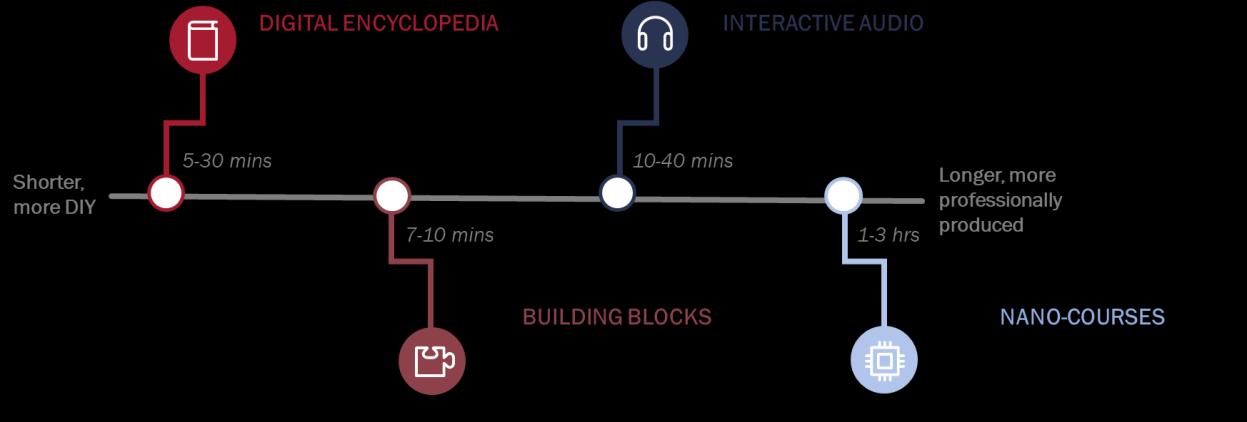
1 minute read
Phase II: INVEST in Technology Infrastructure and Content Strategies (1-3 years
Phase II: INVEST in Technology Infrastructure and Content Strategies (1-3 years)
Level Recommendation
Faculty and Course • Measure learning outcomes to understand the impact of new approaches, modalities, and audiences. The task force recommends adding measures of reach, personal transformation, and social impact to the traditional metrics of learning mastery and career outcomes.
School and Program • Upgrade technology in residential classrooms and prototype new models for teaching and learning. Build on current hybrid classroom experiments to evaluate investments in technology-enabled classrooms, such as extensive multi-screen setups and screens to monitor chat.
University • Create space and place where faculty can explore and practice. Harvard can build a sandbox—with staff, resources, even a studio—for faculty to tinker with remote and blended teaching methods, drawing on such models as the Global Health Education and Learning Incubator. • Execute a short-form content strategy. By investing in campus-wide resources and central infrastructure, Harvard can offer faculty versatile ways to reach audiences in new formats, including digital encyclopedias, interactive audio, and short courses. • Build a unified Harvard-wide learning experience platform that addresses key online and residential learning needs. This can complement our current investments, be tailored to learners’ needs, and allow all schools to offer blended and online learning in new ways that benefit both residential and online programs with bidirectional spillovers. • Expand spaces for state-of-the-art online synchronous learning. We should expand the availability of experiences such as HBS Live and HELIX by investing in next-generation teaching spaces that can dramatically increase faculty’s reach, breadth, and impact. • Negotiate Harvard-wide partnerships. We can expand flexibility and access for talented learners worldwide bypartnering with other colleges and universities, employers, and organizations that have complementary digital capabilities.



